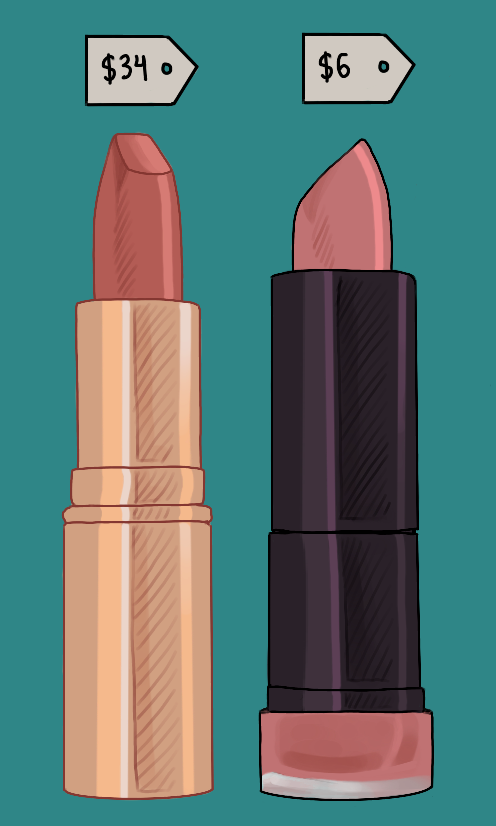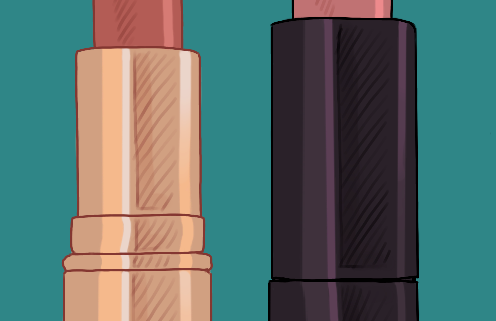The dupe trend is getting out of hand

Nowadays, hardly anyone is a stranger to dupes. Perhaps not the word itself, but the concept of knock-offs is neither revolutionary nor new. Back in the day, dupes were the unlabeled logoless Ugg boots swiped off the shelves at Marshalls or the designer bags purchased off the corner of Canal Street. Knock-offs weren’t exactly fabulous either; their purpose was to fit in, not stand out. I cannot say the same for the new surge in dupe culture curated by social media.
Duplicates — or dupes — like knock-offs, are regarded as the cheaper version of various fashion and beauty products that are more accessible to the general public than their original product. Dupes are everywhere — and I truly mean everywhere. From e.l.f, a famous beauty brand, capitalizing off Charlotte Tilbury’s Hollywood Flawless Filter with their Halo Glow Liquid Filter, to the rise in Amazon shopping and the Amazon Influencer Program, alternative products are almost impossible to get away from.
Social media has been overrun by the latest trend in dupe culture, with influencers strictly dedicated to finding the cheapest version of any product requested. This is not to shame those who occasionally participate in dupe culture; buying a SKIMS knock-off dress from Amazon also makes me feel like a 21st century Robin Hood. But the issue lies in how out of control dupes have gotten in recent years and how it has impacted not only designers but the environment.
There is a stark difference between dupes and creative plagiarism. In an interview with The Washington Post, Kimberley Gordon, the creator of the viral Selkie dress which retailed for $250 to $400, said that she found herself helpless as she realized copies of her dress had appeared on sites like Instagram and Amazon. Gordon sent countless links to her lawyers but navigating fashion law is murky at best. It does not help that social media influencers who could afford the original Selkie dress spread the links to the dupe around like wildfire.
Many argue that those who can’t afford things at a price tag like the Selkie dress should not be left out. The surge in super culture has allowed cheaper items to be trendy and acceptable. Google searches for the term dupe are up nearly 32% since June 2022. Since then, popular dupe retailers like Dupeshop have had a 200% spike in worldwide sales. While I understand the appeal of wanting an on-brand and on-trend item, understanding the original piece’s value is more important.
It may be counterintuitive but fast fashion and dupes only make fashion more inaccessible. While sustainable items can cost a pretty penny, if you’re careful with your purchase, those items will last years. Meanwhile, settling for dupes from places like SHEIN may cost you the quality and longevity of an item. There’s a difference between finding alternatives to high-end luxury products that are more about the name and packaging than the product itself and settling for dupes that will end up in the trash after a few wears. You won’t find self-expression in dupes, only plagiarism and unethical organizations that are harder to pinpoint and hold accountable. You’re not just sacrificing quality for dupes but the earth itself.
According to Business Insider, fashion production comprises 10% of total global carbon emissions. The rapid production and distribution of fashion items contribute to varying forms of environmental pollution. The fashion industry requires about 700 gallons of water to produce one cotton shirt and 2,000 gallons to produce a pair of jeans. Brands that use synthetic fibers — like Forever 21, ZARA and H&M — have a significant hand in the 35% of non-biodegradable microplastic floating around our oceans.
Ironically, the World Economic Forum states that 40% of Gen Z rank climate change as one of the top three most pressing issues in the world, but thredUP’s 2022 Fast Fashion Confessional Report found that 72% of college students shopped from fast fashion in the past year. I love shopping as much as the next person and find bliss in the feeling I get when a package notification lights up my phone, but when it comes to weighing the cost of buying authentic brands versus the consequences of duplicates, it is clear which one is truly worth it.

